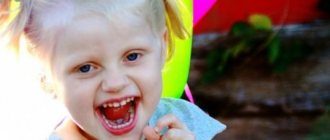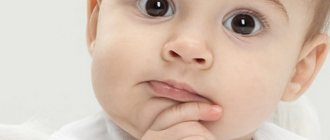Attention deficit disorder (ADD) is a biological immaturity of the brain. As a rule, this diagnosis is made to children. ADD manifests itself in the form of increased distraction and lack of concentration. For example, a child sits quietly, does not move, and is inhibited; when you give him tasks, he starts to do something, but cannot complete the task.
This diagnosis is also characterized by high impulsivity and hyperactivity. Then they talk about attention deficit hyperactivity disorder (ADHD). This manifests itself in the fact that the child does not maintain attention, cannot concentrate on something, constantly jumps from one place to another, does not keep track of tasks, and has increased motor activity.
ADD/ADHD can be determined with 100% accuracy only at school age, since during this period one’s behavioral reactions, as well as mental and physical development, are assessed.
ADHD symptoms are uncommon in adults. Many of them underwent therapy as children, others have simply adapted to life in modern society, and some of them are completely unaware of the presence of a mental disorder.
Causes
The cause of most cases of ADHD is unknown; however, environmental involvement is suspected. Certain cases are associated with a previous infection or brain injury.
The following risk factors for the disease are identified:
- Family: psychiatric disorders in family members, unsatisfactory social status, criminal environment, constant conflicts in the family, alcoholism and drug addiction.
- Perinatal causes: intrauterine fetal hypoxia, asphyxia of the newborn, prematurity, maternal consumption of alcohol, medications, smoking.
- Social: young age of parents, unpreparedness for raising a child, tense environment, stress and conflicts in the family.
These factors can cause a delay in the normal development of brain structures, causing their functions to be impaired. As a result, the risk of developing ADHD increases.
Diagnosis of ADHD
To date, there are no specific tests to identify a child with ADHD. A number of criteria have been established on which the diagnosis of the syndrome is based. The diagnosis is based on interviews with parents and school teachers, as well as medical observation of the child for six months. Possible other mental and neurological disorders must also be taken into account.
Diagnostics involves taking into account the following factors:
- features of pregnancy and childbirth;
- diseases suffered in early childhood;
- living conditions of the child in the family.
Long-term manifestation of symptoms is required before the age of seven years.
Symptoms
Symptoms usually appear in childhood and, with proper correction, are almost unnoticeable in adults. It is believed that with age a person manages to adapt, the nervous system is rebuilt and ADHD no longer affects everyday life as much. However, if a child with such a diagnosis is not helped, then the likelihood of symptoms persisting into adulthood is 60%.
The most unpleasant symptom is decreased attention. Such people find it difficult to listen to the end of their interlocutor, watch a movie, finish reading a book, and have difficulty learning. In adults, this may manifest itself in the inability to plan expenses, perform monotonous work, etc. They may find it difficult to create a strong long-term marriage or achieve a promotion.
Symptoms and complications of ADHD in children and adults
ADHD is officially considered a disorder. Symptoms of ADHD are most often noticed by teachers, caregivers, or parents.
ADHD symptoms fall into two broad categories: inattention and hyperactivity.
9 symptoms associated with inattention:
- the child does not pay attention to details or makes careless mistakes;
- he has difficulty maintaining attention;
- often does not listen when spoken directly;
- the child often does not complete tasks or cannot follow instructions;
- difficulties arise with organizing tasks;
- frequent avoidance or strong reluctance to perform tasks that require constant mental effort;
- the child often loses things;
- he is constantly distracted;
- forgetfulness.
9 symptoms associated with hyperactivity:
- the child often fusses or squirms;
- he cannot sit in one place for a long time;
- often runs and climbs when it is inappropriate;
- does not play calmly;
- he is constantly “on the go”;
- talks a lot;
- he shouts out answers to questions that were not completed;
- he has difficulty waiting his turn;
- the child often interferes and is constantly distracted.
Children with ADHD are much more likely than typical children to face a number of other problems:
- learning disability (20-50% of children with ADHD have it, despite normal intelligence);
- tic disorders (such as Tourette's syndrome);
- language problems (for example, insufficient vocabulary);
- oppositional defiant disorder;
- behavioral disorders;
- autism;
- anxiety disorders;
- depression.
For some children, symptoms disappear as they get older. However, many children with ADHD will have similar symptoms into adulthood. In adults with ADHD, symptoms may be slightly different. For example, they may feel very restless rather than being hyperactive (running, climbing, etc.). Adults may also have fewer symptoms, but will likely still have problems with attention and impulsivity.
Types of ADHD
Traditionally, ADHD with predominant inattention (ADHD-I) and a combined type of the disease are distinguished. The latter type is more common. Children with ADHD-N give the impression of being lethargic and sleeping on the move. They perceive information more slowly than their peers and remember worse. Such children give the impression of being sleepy, timid, shy, and apathetic.
Causes of ADHD
Biological factors are the causes of ADHD. Specifically, neurological imbalances in the brain are thought to cause the symptoms experienced by a person with ADHD.
Chemicals in the brain called neurotransmitters help send messages throughout the body. Scientific research shows that certain neurotransmitters are present in lower amounts or absent in people with ADHD.
Even though neurological imbalances are present in people with ADHD, the exact cause is unclear. In many cases, ADHD appears to be largely genetic, as children with ADHD are four times more likely to have close family members with the same diagnosis. Several genes have also been found to be associated with ADHD.
During pregnancy or after childbirth, certain factors can damage the brain and change its function. During pregnancy, this condition can be caused by radiation, alcohol, or other factors affecting the baby's developing brain. Low birth weight may also increase the risk of ADHD. After birth, the presence of certain infectious diseases that affect brain tissue, such as meningitis or encephalitis, can affect the way the brain sends signals and contribute to the development of symptoms associated with ADHD.
Some experts have linked the use of food additives and sugar to ADHD. However, most experts do not believe that ADHD can be caused by dietary factors.
Classification of ADHD
There are three variants of the course of ADHD depending on the predominant symptoms:
- Hyperactivity disorder without attention deficit;
- Attention deficit disorder without hyperactivity;
- A syndrome combining attention deficit and hyperactivity (the most common variant).
In addition, simple and complicated forms of the disease are distinguished. If the first is characterized only by inattention and hyperactivity, then with the second these symptoms are accompanied by headaches, tics, stuttering, and sleep disturbances.
Risk factors
It is worth considering the following negative factors that may affect the development of pathology.
- environmental toxins such as lead, found in pipes and paint in older structures;
- parents, sisters and brothers, as well as other close relatives with such a disorder or deviations of a psychological nature;
- maternal alcohol abuse, smoking or drug addiction during pregnancy; premature birth;
- exposure to various toxic substances on the expectant mother, for example, polychlorinated biphenyls.
Should I see a doctor?
A very large number of children can be inattentive, impulsive and hyperactive from time to time. For preschool children, such behavior is often considered the norm; they may be inattentive and not linger for a long time on one particular type of activity. It is very important not to confuse this with symptoms of a disease such as attention deficit disorder.
Even older children and teenagers can have different levels of engagement and activity depending on how interested they are in the activity.
The same can be said about hyperactivity. Babies, by their nature, are energetic creatures, capable of exhausting their parents without getting tired for a second.
It's natural for some kids to be more active than others, depending on their genetic type and more. If your child is not doing very well at school, but he is doing a pretty good job at home, has no difficulty communicating with other children, and has a circle of friends, then this is not attention deficit disorder. The same can be said about other children who are inattentive and hyperactive at home, but do not experience problems within the walls of school and among friends.
If you suddenly feel that your child is showing symptoms of the pathological condition in question, it is recommended that you immediately contact your family doctor or pediatrician. The doctor will be able to conduct an initial examination and, if necessary, refer you to a more specialized specialist. Already during the initial examination, the doctor will be able to identify the causes of your child’s problems.
If the child has already been treated once, then he will have to be checked regularly until all symptoms significantly decrease, and after that - once every 3-4 months. It is important to promptly tell your doctor about possible side effects of treatment, such as problems sleeping or loss of appetite, increased irritability, or no improvement.
Complications
Ignoring the situation can lead to the following consequences:
- learning difficulties, performance problems, discussions between teachers and other children;
- low self-esteem;
- frequent damage and injury;
- difficulties in interacting with adults and peers;
- increased risks of using drugs, alcohol and other deviant behavior.
Diagnostics
Children. Diagnosis of ADHD is carried out using the following methods:
- Collecting information about the child regarding visiting a doctor.
- Study of dopamine metabolism.
- To identify the diagnosis, the doctor may prescribe Doppler ultrasound, EEG and video-EEG.
- A neurological examination is carried out, during which the use of the NESS technique is possible.
- Genetic examination of parents to identify the causes of the disease.
- MRI. A complete examination of the person will show other abnormalities that could possibly influence the provocation of the disease.
- It is possible to conduct neuropsychological testing methods for school-aged and older children.
Based on all these methods, the preliminary diagnosis of ADD and hypersensitivity is either confirmed or refuted.
Adults. Several screening instruments, self-tests or checklists, marital court reports, and parent report questionnaires are available for the assessment of adults with attention deficit hyperactivity disorder (ADHD), including the Connors Rating Scale, the Adult ADHD Self-Sufficiency Symptom Checklist, and others.).
There are currently no blood tests, genetic tests, or imaging studies that can accurately diagnose ADHD.
Self-diagnosis
This section provides a questionnaire that will help you determine whether you have reason to suspect that your child has ADHD. This questionnaire is based on the Diagnostic and Statistical Manual of Mental Disorders, Fourth Revision (DSM-IV) criteria for ADHD. This guide is used by foreign doctors. In our country, the criteria for ADHD have not been developed in such detail. The questionnaire cannot serve as the only reliable tool for diagnosing ADHD, but it can be used to better understand your child.
The questionnaire assumes only two answers “yes” and “no”, one of which must be selected. The answer “yes” should be chosen only if the feature described in this paragraph has been observed in your child constantly, for a long time (no less than the last six months), in different situations (at home, in a childcare center, at a party, on a walk etc.) and prevents him from adapting.
A questionnaire based on the DSM-IV criteria for ADHD.
Carefully read the description of each feature and choose one of the two answers.
| 1. | The child is often unable to maintain attention to details and, due to negligence and frivolity, makes mistakes in school assignments, work performed, and other matters. | Yes | No |
| 2. | Usually has difficulty maintaining attention when completing tasks or playing games. | Yes | No |
| 3. | Often one gets the impression that the child does not listen to speech addressed to him. | Yes | No |
| 4. | Often it is not possible to adhere to the proposed instructions and cope with the completion of lessons, homework or duties at the workplace (which has nothing to do with negative or challenging behavior, the inability to understand the task). | Yes | No |
| 5. | Often has difficulty organizing independent completion of tasks and other activities. | Yes | No |
| 6. | Typically avoids, expresses dissatisfaction with, and resists involvement in tasks that require prolonged mental effort (eg, school assignments, homework). | Yes | No |
| 7. | Often loses things needed at school and at home (for example: toys, school supplies, pencils, books, work tools). | Yes | No |
| 8. | Easily distracted by extraneous stimuli. | Yes | No |
| 9. | Often shows forgetfulness in everyday situations. | Yes | No |
| 10. | The child often has restless movements in the hands and feet, and while sitting on a chair he twists and turns. | Yes | No |
| 11. | Frequently gets up from his seat in the classroom during lessons or in other situations where he must remain seated. | Yes | No |
| 12. | Often exhibits aimless motor activity: runs, spins, tries to climb somewhere, and in situations where this is not acceptable (in adolescents this may be limited to a subjective feeling of anxiety). | Yes | No |
| 13. | Usually cannot play quietly or do leisure activities. | Yes | No |
| 14. | He is often in constant motion and behaves “as if he had a motor attached to him.” | Yes | No |
| 15. | Often talkative. | Yes | No |
| 16. | Often answers questions without thinking, without listening to them completely. | Yes | No |
| 17. | Usually has difficulty waiting his turn in various situations. | Yes | No |
| 18. | Often interferes with others, pesters others (for example, interferes in their conversation). | Yes | No |
If you answered “yes” 6 or more times to the first 9 questions, then your child has signs of attention deficit disorder. If you answered “yes” 6 or more times to the last 9 questions, then your child has signs of hyperactive-impulsive behavior.
In the new manual (DSM-V), the wording is more universal, so it can be suitable for both adults and children. Also, according to DSM-V, the age of onset of symptoms is raised to 12 years. You might like this version better, so we'll include that one as well.
A questionnaire based on the DSM-V criteria for ADHD.
Carefully read the description of each feature and choose one of the two answers.
| 1. | Frequently fails to pay close attention to detail or makes careless mistakes at school, work, or other activities (eg, omits details, performs work inaccurately). | Yes | No |
| 2. | Often has difficulty maintaining attention during tasks or games (for example, difficulty concentrating during lectures, conversations, reading, or writing for long periods of time). | Yes | No |
| 3. | Often gives the impression that he is not listening when spoken to (seeming to be "absorbed" in something, even in the absence of any obvious distractions). | Yes | No |
| 4. | Often cannot follow instructions (begins to complete a task, but quickly loses attention and is easily distracted, unable to complete a school assignment, household chore, or task at the workplace). | Yes | No |
| 5. | Often has difficulty organizing tasks and other activities (difficulties in solving problems that require a certain sequence of actions, cannot keep his things in order. His work is sloppy and disorganized. Poor time management and, as a rule, is unable to meet given deadlines deadlines). | Yes | No |
| 6. | Typically avoids, does not enjoy, and is unwilling to engage in tasks that require sustained mental effort (such as schoolwork or homework or, for older adolescents and adults, preparing reports, filling out forms, or reviewing long documents or articles). | Yes | No |
| 7. | Frequently loses items needed to complete assignments or other activities (eg, items needed for school assignments, pencils, books, tools, wallets, keys, documents, glasses, or cell phones). | Yes | No |
| 8. | Often easily distracted by extraneous stimuli. For older teenagers and adults, these may be extraneous thoughts. | Yes | No |
| 9. | Often forgetful about daily activities, homework, and errands (for older teens and adults this may include answering calls, paying bills, and keeping appointments). | Yes | No |
| 10. | Often moves or taps his arms or legs restlessly, or fidgets in his seat. | Yes | No |
| 11. | Frequently leaves his seat when sitting still is required (may get up from his seat in a classroom, office, or elsewhere, or in other situations that require everyone to sit in their seats). | Yes | No |
| 12. | Often runs or tries to climb on something in inappropriate situations. In teenagers or adults, everything can be limited to a feeling of inner restlessness or tightness. | Yes | No |
| 13. | Often unable to play or do leisure activities calmly. | Yes | No |
| 14. | Often "in motion", acts as if "engine driven". Experiences discomfort when it is necessary to remain calm for a long time, for example, in restaurants, at a meeting, etc. Perceived by others as restless and having difficulty “keeping up with everyone else.” | Yes | No |
| 15. | Often overly talkative. | Yes | No |
| 16. | Often blurts out an answer without listening to the end of the question (for example, he finishes a sentence for others, cannot wait for his turn in a conversation). | Yes | No |
| 17. | Has difficulty waiting (for example, when standing in line). | Yes | No |
| 18. | Frequently interrupts others or interferes in other people's affairs (frequently interferes with conversations, games, or other activities; may begin to use other people's things without asking or obtaining permission; adolescents and adults may interfere in other people's affairs or begin to act for another). | Yes | No |
If you answered “yes” 6 or more times to the first 9 questions, then your child has signs of attention deficit disorder. If we are talking about an adult (17 years and older), then 5 “yes” answers are enough. If you answered “yes” 6 or more times to the last 9 questions, then your child has signs of hyperactive-impulsive behavior. If we are talking about an adult (17 years and older), then 5 “yes” answers are enough.
We will talk about what to do next with this information in one of the following materials, dedicated to the correction of ADHD.
In children with ADHD, quite often you can find some other symptoms, which, however, in themselves are not criteria for ADHD:
- Coordination disorders are detected in approximately half of the cases. These may be disturbances in fine movements (tying shoelaces, using scissors, coloring, writing), problems maintaining balance (children have difficulty learning to ride a skateboard and a two-wheeled bicycle), disturbances in visual-spatial coordination of movements (inability to play sports, especially games with ball).
- Deviations in emotional development in ADHD are often observed. The emotional development of a child, as a rule, is delayed, which is why his emotional reactions and assessment of events do not correspond to his age. In addition, children with ADHD regularly produce impulsive emotional reactions, which are sometimes regarded as manifestations of aggression. Teachers of children with ADHD often complain about such “aggression”, not noticing that, in most cases, cunning classmates simply provoke such a child, deliberately trying to cause a negative reaction in him. Parents of such children often say that their child at school and at home are two different children, and it is very difficult for them to believe what the teacher says, since there are no “outbursts of aggression” at home. Episodes of aggression in people with ADHD are not intentional, but reactive-impulsive in nature [Retz, Rösler, 2010].
- Relationships with others . Children with ADHD typically have impaired relationships with both peers and adults. In social development, children with ADHD lag behind their peers, their interests do not correspond to their calendar age. Despite this, they strive to lead. Therefore, they have few friends among their peers. As many parents note, children with ADHD do not benefit from the usual punishments and rewards. So, for example, one of my acquaintances, a father of many children, says that he uses a “rug” on which the guilty tomboy (and he has three of them) must stand for several minutes. Two children, 7 and 5 years old, try not to get on this rug, and the eldest son, 9 years old, suffering from ADHD, does not draw any conclusions from the punishment, although it would seem that he is intellectually ahead of his brothers. It is “bad manners” combined with impulsiveness that is the main reason for turning to a doctor or psychologist.
- Partial developmental delays . Many children with ADHD do poorly in school despite having a normal IQ. In addition, children with ADHD often have partial developmental delays, including delays in mastering basic school skills (writing, counting, reading). The main symptom of such delays is the discrepancy between actual performance and that which could be expected based on the intellectual development of this child.
- Children with ADHD are more likely to experience bedwetting.
- Children with ADHD often have trouble falling asleep and are drowsy in the morning and difficult to wake up.
It is believed that in approximately 2/3 of cases, ADHD is combined with other disorders. Most often - with oppositional defiant disorder (>32%), anxiety (>22%) and conduct disorder (>7%) [Young, 2008]. Depression, bipolar disorder, and substance abuse (smoking, alcohol, and drug use) are quite common in children with ADHD.
The prevalence of ADHD is currently very high. Among schoolchildren it is equal to 3-10% [Pastor, Reuben, 2008]. Several years ago, when our research group conducted a study of children with manifestations of attention deficit hyperactivity disorder in a number of Moscow schools and kindergartens, the results of the survey using the DSM-IV questionnaire were not encouraging. Approximately 23% of children (regardless of educational institution), from the point of view of parents and teachers, had behavioral signs of ADHD. Later, I was surprised to discover that approximately the same result was obtained by Ukrainian doctors who took part in an international statistical study on the prevalence of ADHD in the world (data from this study were presented at the 1st World Congress on Consensus in Pediatrics, held in Paris in 2011 year). Of course, I am sure that this horrific result is due to the incorrect use of ADHD criteria. It was certainly not specified how long these symptoms have been observed in the child, whether they manifest themselves in more than one life situation, etc. But even despite this, it is impressive how many children do not meet the requirements of adults in terms of their attention and ability to regulate behavior. Our society is not ready to deal with the modern generation of children.
According to various sources, ADHD is more common in boys than in girls. The ratio ranges from 3:1 to 9:1.
Long-term observations of patients and retrospective studies have shown that hyperactivity decreases with age in many people, even if other disorders remain. According to our own data, the turning point occurs at the age of 9 years. After this age, the number of children with hyperactivity coming to us for consultation decreases sharply (from 67.5% to 25%). But, unfortunately, in 65% of children who suffered from attention deficit hyperactivity disorder in primary school, this syndrome is fully or partially preserved in adolescence and adulthood (for example, symptoms of hyperactivity disappear, but attention deficit remains). Such people have a high risk of social maladjustment. This risk is mainly associated with the insufficient ability of people suffering from ADHD to work systematically. Consequently, adults with ADHD have difficulty obtaining higher education and subsequently being consistently successful in the workforce. Their inattentiveness, difficulties in self-organization, forgetfulness, and poor ability to analyze the situation often make them undesirable employees, causing irritation among managers and ridicule from colleagues at work. This further weakens their already weak motivation for systematic work, reduces self-esteem and can lead to the development of anxiety and depression, and attempts to solve their problems with the help of alcohol. However, contrary to what was once believed, people with ADHD do not have an increased risk of developing drug addiction and criminal events.
In many developed countries, ADHD is an economic problem. For example, the costs in the USA for treatment, health maintenance, education of people with this disease in 2000 amounted to about $14,600 per year per person (42.5 billion dollars per year!). Now this figure is probably much higher. And this tells us about the need for timely diagnosis, prevention and correction of ADHD. If ADHD does not become an economic problem for the state, it becomes an economic problem for the loved ones of the person suffering from ADHD, but the sooner help is provided, the greater the effect that can be expected from this help.
ADHD Treatment
Children. Most experts believe that attention deficit disorder is an incurable disease. Despite this, there are those who are sure that this is a myth and propose certain measures for the treatment of ADHD.
Treatment of ADHD involves the use of short-term and long-term drug therapy and behavior correction through psychotherapy. The main medications in this case are psychostimulants like Dextroamphetamine-amphetamine, Lisdexamfetamine and Methylphenidate, which act on neurotransmitters to normalize attention and reduce hyperactivity. Antidepressants are also often used, but their effect is much slower.
Adults. Many adults who were not diagnosed with ADHD in childhood do not understand that this particular illness is the cause of most of their difficulties in life, problems with attention and learning new material, and difficulties in relationships with other people.
What should parents do if they suspect ADHD in their child?
You should consult a pediatrician. The diagnosis of ADHD can only be made using information about the child's behavior from several people the child knows. The doctor will ask the parents certain questions and may consider it necessary to talk with a teacher or someone who is familiar with the child's behavior. The doctor may ask the child's teacher to fill out certain forms or questionnaires. This will help the parent and clinician compare their child's behavior with that of other children.
The doctor may also need to conduct appropriate diagnostic tests of the child's vision and hearing, if these have not been recently performed.
Your doctor may recommend certain medications to see if you can control hyperactive behavior. However, a trial prescription of any drug cannot serve as a basis for a diagnosis of ADHD. However, it may play an important role in assessing suspected ADHD.
Diagnosing a child with ADHD can be challenging for a doctor. Many children with ADHD do not exhibit any hyperactivity during office visits. Therefore, your doctor may recommend consulting with a specialist in the field of behavioral problems in children, such as a psychologist.
How is ADHD diagnosed?
Many people try to diagnose themselves using questionnaires or questionnaires available in magazines or on the Internet. And although these materials may be useful, the best and only sure way if you suspect ADHD is to consult a doctor. The doctor may ask the following questions about the past and present of the person being examined, and about the current state of his relationships. The person being examined may be asked to write down their answers on the questionnaire form.
- Do you have problems concentrating and hyperactivity? Do these problems appear in childhood?
- Do you find it difficult to control yourself or stay in a good mood?
- Do you have problems staying organized or meeting deadlines?
- Do these problems manifest themselves both at work and at home?
- Are these problems noticeable to family and friends?
- Are there any physical or mental problems that negatively affect behavior? (Your doctor may order a physical exam and diagnostic tests to look for problems associated with ADHD-like symptoms.)
What can cause suspicion of ADHD in the absence of it?
A person may experience feelings of restlessness, anxiety, or detachment for many different reasons. Below are just a few of those on the basis of which a doctor can assume this diagnosis:
- Depression or discouragement
- An attack of excruciating anxiety or panic
- Side effects of prescription, over-the-counter or herbal medicines
- Thyroid or other hormonal disorders
- Alcohol or drug abuse
- Effects of lead on the body
Modern methods of treating hyperactivity and attention deficit disorder in children
Recently, scientific studies have begun to appear (which are based on observation of patients with ADHD for 10-20 years), which claim that methods of pharmacocorrection for attention deficit hyperactivity disorder are ineffective and ineffective. Thus, the main role in our time is given to non-pharmacological approaches to the treatment of hyperactivity in children. Such approaches include:
- Behavioral (i.e. behavioral) psychotherapy;
- Neuropsychological correction (using various exercises);
- Nutritional treatment method (in which the child’s body compensates for the deficiency of certain macronutrients);
- Family therapy (which gives parents specific recommendations on how they should improve their life and communication with their child so that, despite the illness, he can fully develop and adapt in society).
Diagnosis and prognosis
To make a diagnosis of attention deficit hyperactivity, a patient is examined, including:
- Conversation with the patient to assess his behavior and communication.
- Performing a test that requires high concentration. The test results allow us to determine the presence of absent-mindedness.
- Instrumental examination using ultrasound or MRI of the brain.
With a correct diagnosis and identification of the cause of the disease, it can be completely cured.
Treatment options for adults
Psychotherapy plays a leading role in correcting a disorder such as attention deficit disorder in adults. The psychotherapist selects the most effective technique based on the individual characteristics of the patient and the severity of his condition:
- Cognitive and behavioral therapy helps to raise the patient's self-esteem and promotes self-affirmation.
- Relaxation trainings are useful; using them, a person can relieve the burden of heavy psycho-emotional stress.
- Behavioral courses help the patient learn to organize his life, make the most of his time, and distribute it between work and leisure.
- Family psychotherapy will help improve relationships between spouses, one of whom suffers from ADHD. Work trainings are used to normalize the professional sphere.
How to behave correctly with a baby who has been diagnosed
Such patients are in dire need of support; when communicating with them, it is necessary to avoid language that indicates what they should not do. Low self-esteem often forces the patient to switch to another action when unsuccessful. In this case, it is recommended to remind that everyone has troubles, so you should not give up on achieving your goal (you can glue a broken toy, cross out a mistake, or draw a new one instead of a damaged picture).
ADHD in children requires assistance in gaining control over excessive motor activity; pleasant memories of listening to music and playing together can help him learn to restrain himself.
The patient needs a simple, implementable plan for each day, week and month. The ability to stick to it helps you react less sharply in unexpected situations. Such a child needs communication in order to learn to express his thoughts and see a positive example of behavior.
Prognosis for ADHD
The prognosis is relatively favorable; in a significant proportion of children, even without treatment, symptoms disappear in adolescence. Gradually, as the child grows, disturbances in the neurotransmitter system of the brain are compensated, and some symptoms regress. However, clinical manifestations of attention deficit hyperactivity disorder (excessive impulsiveness, short temper, absent-mindedness, forgetfulness, restlessness, impatience, unpredictable, rapid and frequent mood swings) can also be observed in adults.
Related posts:
- Hypolybidemia Decreased libido (hypolybidemia) is a common form of sexual dysfunction in men….
- Dementia or weak-mindedness: stages, causes and treatment Dementia in the scientific community refers to dementia acquired during life,…
- Treatment of phobias with medications A phobia is a type of anxiety disorder defined by a state of persistent fear. Phobia,…
- Primary tics or tic disorders Primary tics mean hereditary ones, from a clinical point of view it is advisable to compile ...
What causes ADHD?
The formation of ADHD is based on neurobiological factors: genetic mechanisms and perinatal damage to the central nervous system (damage to the brain and spinal cord that occurs during pregnancy, childbirth and the early postpartum period), which can be combined with each other. It is they who determine changes in the functioning of the nervous system and disorders of higher mental functions and behavior that correspond to the picture of the syndrome. In many cases, additional influence on children with ADHD is exerted by negative socio-psychological factors (primarily intra-family), which in themselves do not cause the development of ADHD, but always contribute to an increase in the child’s symptoms and adaptation difficulties. Disorders associated with ADHD (so-called comorbid disorders). Additional difficulties in family, school and social adaptation in children with ADHD may be associated with the formation of concomitant disorders that develop against the background of ADHD as the underlying disease in at least 70% of patients. Comorbid disorders in ADHD are represented by the following groups: oppositional defiant behavior, anxiety disorders, mood disorders, speech development disorders, learning difficulties, lack of coordination, awkwardness, tics). Other related ADHD disorders may include sleep disturbances and involuntary urination during sleep.
Prevention
To help prevent your child from developing symptoms of this disorder, be sure to follow these guidelines.
- During the period of gestation, try to avoid any negative factors that may affect its development - drugs, smoking, alcohol, toxic substances from the external environment. It is also worth remembering the dangers of second-hand smoke, pollutants and toxic substances from lead paint, industrial and agricultural chemicals.
- Watching television should also be limited; after the baby is born, limit him to watching TV and playing on the computer.
- When raising your child, set clear boundaries, be consistent, and try to clearly understand the consequences of his behavior.
- The baby should have a clear idea of what he has to do during the day - breakfast, going to school, homework, cleaning the house and eating, rest and entertainment - everything should be planned.
- When communicating with your child, do not be distracted by extraneous matters, eye contact should always be present, and always take a couple of minutes to praise.
Parents must understand that the key to successfully adjusting their child’s behavior directly depends on harmonious cooperation with doctors and teachers. It is important to detect problems early to minimize damage.
Treatment
Traditionally, the problem is treated using medications accompanied by counseling, training, and an educational program. This approach only allows you to relieve symptoms, but not cure the disease. It may take a long time to determine more specific approaches, and parents should be prepared for this.
Stimulants
Psychostimulants are prescribed most often; they are able to increase and regulate the level of neurotransmitters and effectively relieve symptoms of hyperactivity.
As an example it is worth citing:
- lisdexamfetamine or lisdexamfetamine;
- dexamphetamine (synonyms: dextroamphetamine, D-amphetamine, (+)-amphetamine).
Before prescribing psychostimulants, it would be a wise step for a doctor to ask parents about the presence of heart disease, since in such cases these drugs can cause cardiac dysfunction and subsequent death.
Consultations and behavior correction
Counseling and behavioral therapy have very positive effects. This part of the treatment should be handled by a social worker, psychologist or psychiatrist.
ADHD Treatment
In some cases, accompanying pathologies in the form of depression or anxiety disorder are observed; consultations can solve such problems.
As an additional measure, it is worth using neurofeedback therapy, which involves recording brain activity using a special device while the child focuses on certain tasks. Theoretically, this approach will relieve symptoms, but it has not yet received sufficient practical confirmation.
Home treatment and lifestyle
It is necessary to try to create the most favorable conditions at school and at home so that the child is comfortable and nothing interferes with his comprehensive development.
Home conditions It is worth studying the following recommendations for parents to create a favorable atmosphere at home:
- Continue to show your child your love and support. Do not lower his self-esteem and self-esteem, do not focus on bad behavior.
- Appreciate your child, spend time together more often without other adults and children. Positive attention should prevail over negative.
- Be specific when giving directions, use simple words and speak slowly. Give one instruction at a time. Before and while voicing your goal, look your child in the eyes.
- Organize rest time for your baby and protect him from excessive fatigue.
- Choose a way to discipline and improve self-esteem. Various types of martial arts, dancing, music, and art can be an excellent option. There is no need to force your child to study; find his special talent that everyone has.
- Strictly adhere to the daily routine, mark important plans and holidays in a large calendar that the little patient will see. Such children find it difficult to accept changes, so they must be prepared for them in advance. Don't suddenly shift your attention from one activity to another.
- Remain calm even if the child is out of control. The baby can adopt your behavior and calm down.
- To increase discipline, take frequent but short breaks.
- Try to identify a difficult situation in advance and do everything to prevent it. For a child with the diagnosis in question, this could be a long shopping trip, a long lecture.
- Remember, it will take a long time before you see improvements. Focus on realistic expectations – the child’s and your own.
- Don't forget about your own rest, as exhausted parents are not what children need.
- You may notice that your child or yourself follows the same script every day. Perhaps it's time to change it. Don't try to cover too much at once; your goals should be realistic.
- A child’s life should be as organized as possible, but we are not talking about iron discipline, everything should be calm and harmonious. Living on a schedule will allow your child to improve his own behavior and feel safe. If you need to move from one place to another or change from one activity to another, give your child a couple of minutes.
- Maintaining healthy family relationships is an important aspect. Raising a child is much easier if the spouses live in harmony. Be sure to take the time to strengthen your relationship.
Conditions at school
Teachers and parents should cooperate and consider the child's needs in the following areas.
- The educational program is primarily subject to discussion. The educational institution must provide special programs for such students. The curriculum, assessment system, methods of independent work, or teaching techniques may be subject to change.
- Sometimes children with this disorder perceive material more effectively if they do not write it down manually, but process it on a computer. Parents should consider this option with the teacher.
- It is necessary to support teachers' attempts to help the child during lessons, make sure that his progress at school is monitored, have enough patience and flexibility, and encourage effort.
- Introduce the practice of doing yoga or meditation after school. Do this with your baby, teach him to control the symptoms of the condition in question.
Behavior of a child with ADHD at school
Caring for a child is a real challenge, parents can often be upset by his behavior and the impression he makes on strangers. Conflict in the family will be a natural result of stress, often accompanied by financial problems.
If there are sisters and brothers, a situation of conflicts between children may arise; they may not take enough participation and the problem child will begin to attract the parents’ attention to themselves even more. It is necessary to prepare for these difficulties in advance.
Concomitant pathologies
It is worth considering the following accompanying pathological conditions:
- Depressive states.
- Learning difficulties, communication problems, comprehension problems.
- Anxiety disorders that lead to intense feelings, worsening symptoms, and nervousness until the anxiety is cured.
- Tourette's syndrome is a neurological disease in which vocal and repetitive muscle tics occur.
- Bipolar mental disorders, combining manic behavior and frequent depression.
- Behavioral disorders, antisocial behavior, tendency to damage property, fights, theft, as well as harm to animals, people, and the environment.
- Oppositional defiant disorder, characterized by negative, defiant, and hostile reactions in response to authority.











